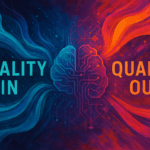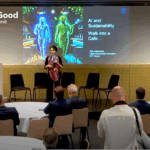
The United Nations Joint Staff Pension Fund was established in 1948, by a resolution of the General Assembly, to provide retirement, death, disability and related benefits for staff upon cessation of their services with the United Nations, and the other organizations admitted to membership in the Fund.
Description of Activities on AI
Project 1: UNJSPF Digital Certificate of Entitlement
The UNJSPF “Digital Certificate of Entitlement” (DCE) system is a state-of-the-art mobile application (App) and web-based authentication solution that can verify the identity, existence, transactions, and location of the United Nations Joint Staff Pension Fund (UNJSPF) retirees (approx. 84,000 individuals located in more than 192 countries), providing a faster, secure, and easier way to meet the requirements for continued benefit payments.
The DCE system allows retirees to use their smart phone, tablet, or other personal device to submit an electronic proof of their eligibility, in lieu of paper-based submissions. The solution uses cutting edge biometric/facial recognition, blockchain, AI, and global positioning technologies to confirm the eligibility of retirees.
The DCE was developed by UNJSPF with the support of the UN International Computing Center, and piloted in 2020, with retirees from the World Food Programme and the Food and Agricultural Organization. Its deployment was then fast-tracked in 2021, as a response to the worldwide disruption of postal services caused by the COVID-19 pandemic.
The DCE introduced innovative processing changes and organizational efficiencies, using a secure and user-friendly design based on new technologies, making it an environmentally friendly solution, which significantly reduced the use of paper, mailings, as well as physical and digital storage.
Aligned with the UN Secretary-General’s strategies on “New Technologies” and “UN2.0”, and the vision of a digital United Nations, the DCE is part of the implementation of the UNJSPF strategy in simplifying client experience and modernizing the Fund’s services.
Lessons Learned
-
Ensuring that the DCE App performs the “biometric test/validation” only locally on the device (i.e., no transmission/storage of biometrics data outside the control of the user).
-
Inability to use biometric-based authentication mechanisms natively available in the Android/Apple devices (i.e., SW libraries exposing limited functionalities; Need to limit App access to extended biometrics information.
-
Different approaches between Apple and Android devices in capturing user’s face in 3D.
-
Challenging “environmental conditions” (i.e., low lighting; background “noise”), during biometric profile capturing.
-
Relatively limited availability of “modern/secure” devices (i.e., devices with HSM module) in the user population.
-
Communicating user-friendly instructions
















